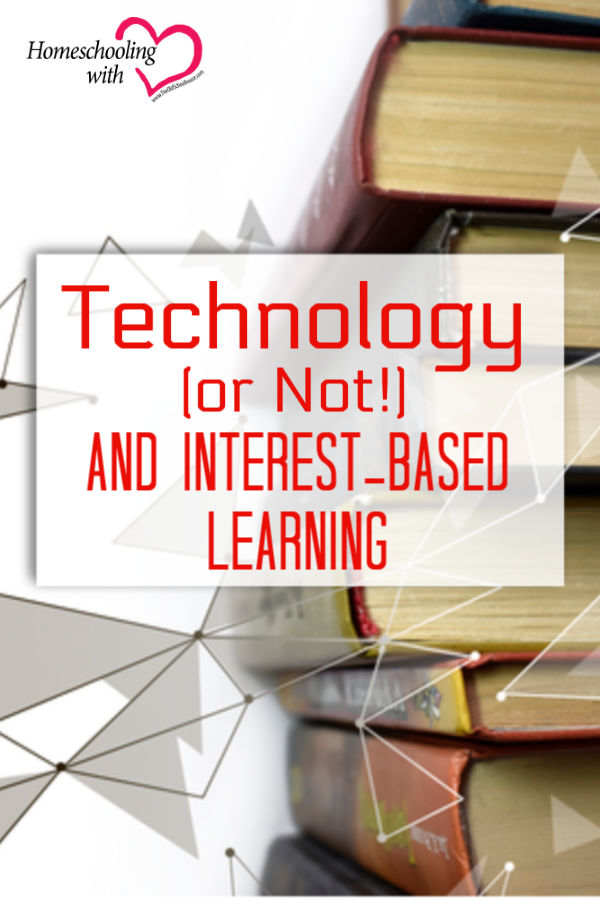Technology (or Not!) and Interest-Based Learning


iPads, laptops, and the dawn of YouTube… let’s face it: our kids are bombarded with technology today. Many of us are guilty of the same technologically-driven pleasures of screen time and visual input. Whether it’s the ding! of a new email or the clang! of the alarm app, our lives are permeated with the need to connect with one another via finger taps.
If a number of students in the homeschool environment are used to television screen time or visual input from devices on a regular basis, how can we keep up? There are viable arguments for keeping technology in the homeschool classroom as well, from playing math games on the computer for learning multiplication facts quickly to websites that help our kids learn to read. Ruel (2019) and other researchers claim that using technology may actually enrich human relationships and thus deepen communication. Suddenly, learning involves the click-click-click of a mouse or a key stroke, and learning appears to be fun (and beneficial).
What other ways can we make learning fun? We know games online are incredibly didactic, useful, and give our students exposure to the technology needed for 21st century jobs: the careers ahead they must be ready for in order to thrive in a growing technologically driven economy. Let’s vary activities, get the kids away from the devices for a second, and focus on interest-based learning.
Find your students’ strengths. Perhaps have them engage in an interest-based questionnaire, perhaps made by your neighborhood or town team of homeschool teachers on Google Forms or ones premade through various sources. Students can take a survey that finds out what they like and what their strengths are, such as using The Interest-A-Lyzer (Renzulli, 1997) and discover more about themselves. From there, students can engage in researching a particular organism such as sharks by using the internet and encyclopedia or their family history through photographs and letters or copying the great artists of the Renaissance using oil paints. Each child has a passion (or more than one passion!) that can be developed… and fun!
Dr. Jeanette Moore is a certified educator in New York, Vermont, Connecticut and South Carolina. She is an established author and frequently contributes to magazines and lesson compilations, including The Old Schoolhouse® Magazine, Spider Magazine, Highlights for Children, and the lesson guide for the National Fragile X Association. Jeanette has published math games for Nasco, including the P.E.M.D.A.S. Color Code. She also writes math and science books for Nomad Press, as well as workbooks for Carson Dellosa Publishing. Jeanette is a member of the International Dyslexia Association and the National Council of Teachers of Mathematics. She is the mother of little Maya Jillian.












































